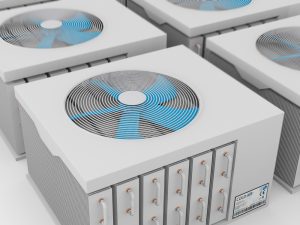
Knowledge Base / News
Every business has a firewall – they are a critical part of every business continuity plan. Firewalls help protect your valuable data from outside theft, and can also help keep employees from engaging in activities (both knowingly and unknowingly) that can result in data loss.
What many businesses don’t consider are environmental factors that can also lead to outages, downtime, and data loss. Firewalls do a fantastic job of preventing data loss via the network, but what happens if a burst pipe causes extensive water damage? Or an unexpected power loss causes servers to crash, leading to data loss?
If your company’s data is vital to your day to day operations (and for 95% of organizations that’s the case) it’s critical to proactively monitor all factors that can lead to data loss.
When your organization is reviewing its business continuity and disaster recovery plans, here are three key environment areas of concern to keep in mind.
 HVAC failure accounts for almost 12% of outages that can cause data loss. In warmer climates, a loss of cooling can cause temperatures in your data center or IT closet to rise dramatically. Current hardware can operate optimally at temperatures up to around 80°F. If temperatures spike up from there in a short period of time, equipment failure can come quickly; hard drive failure and crashed servers can bring your business to an immediate halt.
HVAC failure accounts for almost 12% of outages that can cause data loss. In warmer climates, a loss of cooling can cause temperatures in your data center or IT closet to rise dramatically. Current hardware can operate optimally at temperatures up to around 80°F. If temperatures spike up from there in a short period of time, equipment failure can come quickly; hard drive failure and crashed servers can bring your business to an immediate halt.
On the other side of the temperature spectrum, a heating failure can cause frozen pipes, which then lead to the unexpected introduction of water into your facility. Rapidly changing temperatures can also drastically change the humidity where your critical data is held. Relative humidity is an often-forgotten environment factor that can cause just as much damage when it comes to server and hard drive failure.
Being alerted to drastic temperature swings can allow your organization to take immediate steps to help bring the environment back to a stable level. Sometimes even the simple act of opening a few data center doors can be enough to cool the environment and help protect your data. At the very least, your organization will be alerted to potential problems that need addressing as soon as possible.
 Sometimes storms sneak up unexpectedly. Hurricanes and blizzards can cause the most damage, and even a torrential rain storm can lead to major problems for your data.
Sometimes storms sneak up unexpectedly. Hurricanes and blizzards can cause the most damage, and even a torrential rain storm can lead to major problems for your data.
Leaky roofs, backed up drain pipes, and ice damage all have the potential to cause physical damage to your servers, computers, and assets. Firewalls may proactively protect those servers from malicious internet-based traffic, but environmental factors can do even more damage if they’re not caught immediately.
When your organization is alerted as soon as the presence of water is detected in your facility, you can immediately take steps to help secure any devices that hold your critical data. Automation could also be used to turn on a pump or a series of fans to help mitigate the water and moisture.
Nearly every business has uninterruptible power supplies protecting their computers, servers, and hardware in the event of a power loss. However, those units often only supply a short period of power before they too turn off. Backup generators can be helpful, but what happens if they don’t turn on for some reason? Or to look at it from another angle, many small to medium size businesses many not even have access to a generator in the event of a prolonged outage.
Given the short timeframe many UPS batteries last, and how much power some appliances use, it’s crucial to gracefully power down servers to avoid data loss when power won’t be restored shortly. Proactively monitoring power allows for instant alerts when the electricity is out, giving staff a short window to power down critical servers before the UPS batteries run out.
Even better, automation combined with proactive monitoring gives you the ability to send shut down commands across your network as soon as power is lost. Just because you lose power doesn’t mean you also need to lose the data your organization needs.
Your data and assets are most likely the primary drivers behind your business continuity plan. It’s important to protect them against theft, but loss can come from more (and unexpected) places than just the internet or malicious employee traffic. Extreme temperatures, water and humidity, and power loss can all wreak havoc on your network and data.
If you truly want to have comprehensive protection for your data and assets, be sure to add proactive environment monitoring to your business continuity plan. Don’t rely on your firewall alone; make sure physical factors are monitored and logged as well.

You may find Windows Command Prompt at the following path:
To run Windows Command Prompt as an administrator:
| Current S models | Current E models |
|---|---|
| Room Alert 32S | Room Alert 32E |
| Room Alert 12S | Room Alert 12E |
| Room Alert 4E | |
| Room Alert 3E | |
| Current S models | Current E models |
|---|---|
| Room Alert 32S | Room Alert 32E |
| Room Alert 12S | Room Alert 12E |
| Room Alert 3S | Room Alert 4E |
| Room Alert 3E | |
| Room Alert 3W |